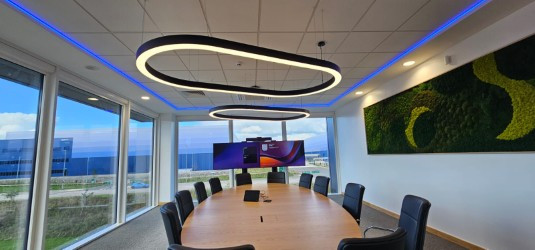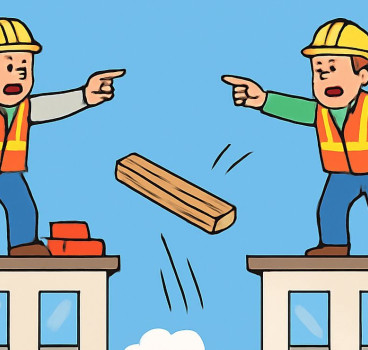Earthscrapers - China’s subterranean revolution
Think for a moment about a city where skyscrapers no longer exist, but are hidden below ground. This is not science fiction – it's the rise of the earthscraper, China's audacious architectural gamble aimed at maximising land use and creating harmony with nature writes John Ridgeway.
Earthscrapers, also known as "underground complexes," are a potential game-changer. They utilise clever landscaping and strategic excavation to conceal multiple floors beneath the ground. The result? Breathtaking green spaces emerge above, while subterranean levels house everything from offices and shopping malls to museums and even schools.
Why dig down? There is a simple answer. In land-scarce China, earthscrapers provide more usable space while preserving valuable surface area for greenery and public amenities. Cities like Shenzhen and Shanghai are prime examples, where parks flourish above bustling subterranean business districts.
Earthscrapers also offer natural climate control. Buried floors benefit from stable temperatures and require less energy for cooling and heating, reducing the carbon footprint and contributing to a more sustainable urban environment.
Buried structures naturally muffle noise pollution, creating quieter, more comfortable spaces for both residents and workers. Earthscraper structures also offer inherent protection from earthquakes and extreme weather events, making them a safer option in seismically active regions like China.
However, this subterranean future is not without its hurdles. Artificial lighting, ventilation, and ensuring accessibility for underground floors pose significant engineering challenges. Additionally, psychological factors like a perceived lack of natural light and potential claustrophobia need to be addressed.
To overcome these obstacles, architects and engineers are pushing the boundaries of innovation. Light wells and skylights strategically channel natural light deep into subterranean spaces. Sophisticated ventilation systems ensure fresh air circulation, while landscaped courtyards and open areas combat any sense of confinement. Moreover, architects are embracing biophilic design, incorporating natural elements like water features and greenery to create a sense of connection with the outdoors.
While China currently spearheads the earthscraper movement, its ripples are spreading globally. Countries like Singapore and Switzerland are exploring similar concepts, demonstrating the international appeal of this unique architectural approach.
Singapore
The Park Royal on Pickering Hotel incorporates lush vertical gardens cascading down its facade, seamlessly blending with the surrounding greenery. Its underground levels house conference rooms and event spaces, offering a unique subterranean experience.
Gardens by the Bay, an iconic park features “supertrees,” towering structures with vertical gardens that act as environmental cooling towers. Its underground network of tunnels and chambers houses research facilities and educational exhibits, blurring the lines between nature and technology.
Switzerland
Monte Rosa Mountain Refuge, a high-altitude, solar-powered hotel is partially hidden within the mountainside, integrating seamlessly with the landscape while prioritising sustainability. Its subterranean spaces utilise advanced ventilation and heating systems to manage the mountain environment.
Denmark
Copenhagen Islands project, is an ambitious vision which proposes a chain of man-made islands off the coast of Copenhagen, some of which could house subterranean structures for research, innovation, and even cultural venues. This audacious project highlights the potential of earthscrapers in expanding land options without impacting existing ecosystems.
United States
Bosque Village, Phoenix, Arizona, is a planned eco-village that will feature partially subterranean homes set within a restored desert landscape. The design utilises passive solar heating and cooling techniques, showcasing earthscrapers' potential for sustainable living in challenging environments.
China
But it is China which is leading the way. Shenzhen's InterContinental Shenzhen Qianhai Bay Hotel, boasts four above-ground floors and 18 subterranean levels, housing restaurants, a spa, and even a ballroom, all under a sprawling parkland. Beyond its luxurious amenities, this hotel incorporates advanced rainwater harvesting and wastewater treatment systems, showcasing resource efficiency within the earthscraper framework
Shanghai's Houtan Park is a massive green space which sits atop a hidden network of museums, libraries, and recreation facilities, creating a seamless blend of nature and urban life. The hidden network beneath the park utilises sophisticated air filtration and climate control systems, creating a comfortable and healthy subterranean environment for visitors and employees.
For the future, Tianjin's Green City Eco-District is a masterplan which envisions a self-sufficient city with residential, commercial, and research facilities housed within earthscraper complexes, prioritising sustainability and ecological harmony. This ambitious project is pioneering vertical farming within earthscraper complexes, integrating food production into the urban fabric and minimising reliance on external food sources
All of this represents a massive technical challenge. Excavating deep pits, employing load-bearing retaining walls, and utilising advanced tunnelling methods are crucial aspects of earthscraper construction. Waterproofing and temperature control systems also become critical, alongside fire safety measures adapted for enclosed spaces.
Concrete with enhanced structural properties, bioluminescent lighting systems, and advanced ventilation technologies also require innovation. Recycled materials and sustainable construction practices are paramount in minimising environmental impact.
In terms of energy efficiency, the earthscraper's inherent insulation potential can be maximised through geothermal energy harvesting, passive ventilation systems and energy-efficient lighting and appliances. This translates to substantial reductions in energy consumption compared to traditional surface structures.
Integrating automation and AI into building management systems can also optimise everything from air quality control to waste management, enhancing comfort and sustainability within the earthscraper.
All of this has massive potential for the future. Earthscrapers could offer a solution for densification without sacrificing green spaces, particularly in land-scarce regions. This could lead to more equitable access to parks and natural areas in urban environments.
The earthscraper isn't just a building; it's a catalyst for rethinking the relationship between urban development and the environment. Its potential to reshape cities, optimise resource management and enhance resilience makes it a fascinating concept with far-reaching implications for the future of architecture and urban living.
The earthscraper story is still being written. As technology advances and social acceptance grows, we can expect more innovative and daring projects to emerge, pushing the boundaries of subterranean architecture and redefining the future of our cities.
Additional Blogs

The changing face of workplace AV and what FM managers need to know
In today’s hybrid workplaces, facilities managers can no longer treat audio-visual systems as background infrastructure - they are now mission-critical assets that directly influence productivity,...
Read moreConstruction’s obsession with blame instead of learning
Construction is one of the most technically advanced industries in the built environment, yet culturally it often behaves like one of the least reflective. When things go wrong and they frequently...
Read more

How risk Is routinely pushed down the supply chain
Risk is an unavoidable part of construction. Every project involves uncertainty around ground conditions, weather, design coordination, procurement, labour and programme. Yet while risk is inherent,...
Read more